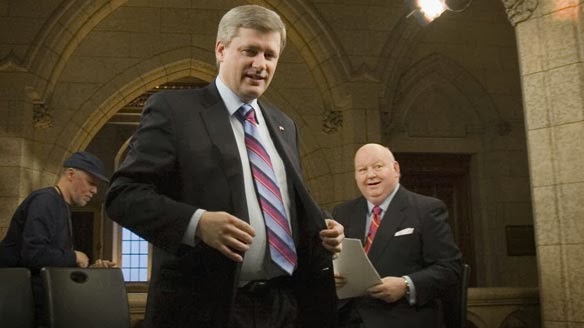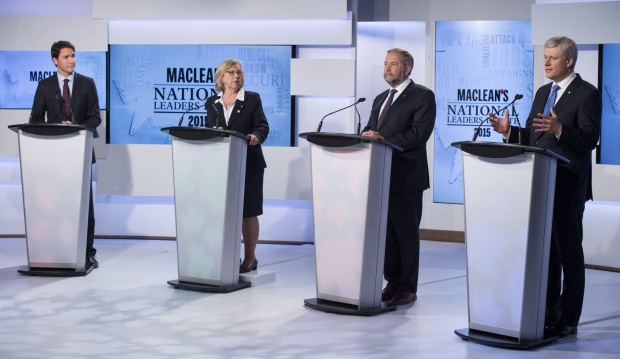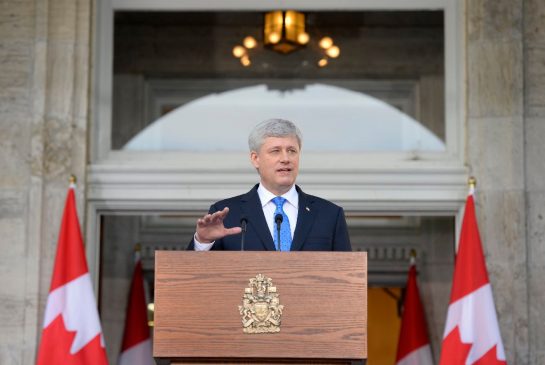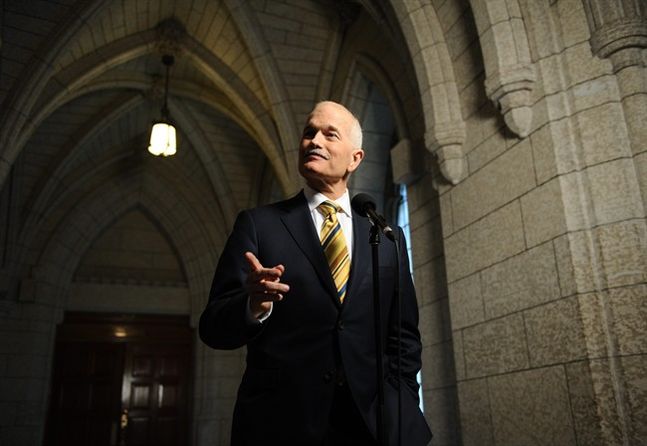
NDP Surge Gave Tories Majority Government

NDP Gave Conservatives Majority
Below is a break down from ThreeHundredandEight.com outlining that the NDP were indeed the cause of the current Conservative majority government.
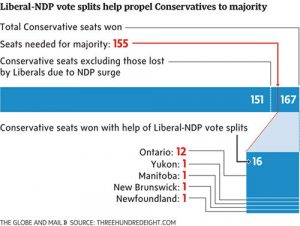
Had the NDP not split the vote in these 16 regions, the Conservatives would have been 4 short of a majority government.
Several of these ridings were close as well.
Bramalea-Gore-Malton went Conservative with only 500 votes leading.
Mississauga East-Cooksville was won with a 700 vote lead.
Etobicoke Centre was won by only 100 votes.
Nipissing-Timiskaming by only a handful of ballots.
In Michael Ignatieff’s old riding, 5,000 new NDP votes helped hand the seat to the Conservatives.
While the NDP gained between 2,200 and 13,500 votes, they only finished second or third.
However, the NDP weren’t completely to blame, in York Centre for example, the 2,200 NDP gain didn’t affect the 6,400 vote gap between Ken Dryden and the newly-elected Conservative MP Mark Adler.
Other ridings that were tossed to the Conservatives due to the NDP were Winnipeg South Centre, Moncton-Riverview-Dieppe, Labrador, and Yukon.
In New Brunswick, the NDP’s growth created a three-way race electing Conservative Robert Goguen.
In Labrador, the 700 NDP votes prevented the Liberals from overtaking the Conservative with only 200 votes behind. In the Yukon, the 1,000 new votes for the NDP prevented the Liberals from holding the seat which they lost by only 100 votes.
While Stephen Harper reaped the benefit of Michael Ignatieff’s failings, he can thank Jack Layton for the 16 seats that bumped him to majority status.
NDP set to become Natural Opposition Party
All the while, the NDP surge wasn’t a fluke, a new Harris Decima poll suggests that Layton secured his position as Official Opposition Leader. Of the poll’s more than 2,000 respondents, the Conservatives got 37%, down from 39.6% on election day, the NDP got 34%, up from 30.6%, the Liberals got 15%, down 4.
“What’s happened is the loyalties of traditional Liberal voters continue to be transferred over to the New Democrats,” said pollster Allan Gregg, the chairman of Harris-Decima.
“We’ve got the New Democrats at an all-time high virtually everywhere except British Columbia right now.”
The center-left people seem to have started to back the NDP which could make it Canada’s natural opposition party.
In Quebec, where the NDP made the most gains, Harris Decima suggests that the voting intention holds: 46% NDP, 21% Bloc Quebecois, 18% Conservatives, 10% Liberals.
Will the NDP Surge Help Quebec’s Quebec Solidaire Party?
Meanwhile, there has been speculation whether Quebec’s provincial party the Quebec Solidaire would ride the NDP wave. It is Quebec’s sister party to the NDP and like the official opposition Parti Quebecois, the Quebec Solidaire are a separatist party.
Threehundredandeight.com has compiled the provincial data and found that if an election were to be held today, Quebecers would oust Jean Charest’s Liberal Party and elect a major Parti Quebecois majority government which would put Quebec separation back on the table in Quebec. Provincially, the Parti Quebecois would get 78 seats, while the Liberals would get 27, the ADQ, Quebec’s right-leaning party would come in third with 15 seats and Quebec Solidaire would gain 4 more seats to get 5.
A CROP poll suggests that the PQ have 34%, the Liberals have 23%, the Action Democratic du Quebec (ADQ) has 16% and Quebec Solidaire has 12%.
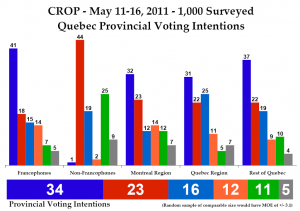
Parti Quebecois leader Pauline Marois has plenty to be happy about and if the trend continues as Jean Charest’s popularity deteriorates in the province, the election that has yet to come in 2 years may give the Quebec separatist movement the keys to the National Assembly. In the end, the Quebec Solidaire didn’t pick up the gains as a part of the NDP surge in Quebec.

